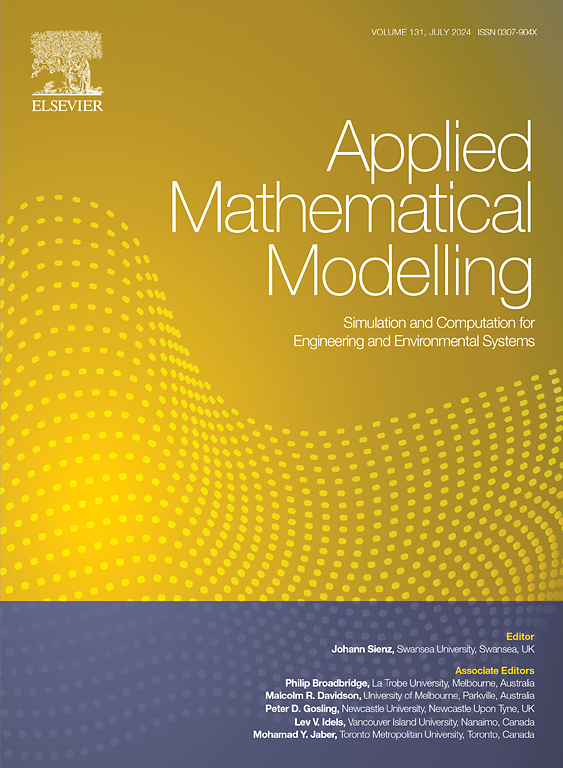多级自相似结构肌腱的分数阶粘弹性模型
IF 4.4
2区 工程技术
Q1 ENGINEERING, MULTIDISCIPLINARY
引用次数: 0
摘要
从分子到宏观水平,肌腱具有多级自相似结构,其远程粘弹性响应在临床环境中具有重要的生物力学意义。现有研究尚未充分研究腱的多层结构与其粘弹性行为之间的关系。本研究提出了一个分数阶的粘弹性模型,用于描述其多层次的自相似结构。从多层肌腱结构中抽象出自相似的弹簧-阻尼器网络,并假定伴随结构层对应的弹簧-阻尼器参数用幂律关系描述。利用Heaviside算子推导了粘弹性模型的本构方程,结果表明,锚索的远程粘弹性响应可以用调质分数阶算子来描述,分数阶算子非线性地结合了幂律标度因子和结构自相似度的影响。所提出的模型被证实适合于在宏观和微纳水平上描述的肌腱松弛反应。与不考虑幂律特征的拟合相比,该方法的拟合效果更好。此外,将分形维数的几何定义扩展到所提出的分数阶粘弹性模型中,为理解软质生物材料的多层次结构与其随时间变化的生物力学功能之间的联系提供了理论基础。本文章由计算机程序翻译,如有差异,请以英文原文为准。
Fractional-order viscoelastic model for tendons with multilevel self-similar structures
Tendons share multilevel self-similar structures from the molecular to macroscopic levels, and their long-range viscoelastic responses have significant biomechanical implications in clinical settings. Existing research has not adequately studied the correlation between the tendon’s multilevel structure and its viscoelastic behaviour. This study proposes a fractional-order viscoelastic model for tendons that describes their multilevel self-similar structures. A self-similar spring-dashpot network is abstracted from the multilevel structures of tendons, and the spring-dashpot parameters corresponding to adjoint structural levels are assumed to be described by a power-law relationship. The constitutive equations of the viscoelastic model can be derived using Heaviside’s operational calculus, which shows that the long-range viscoelastic response of the tendon can be described by a tempered fractional-order operator and that the fractional order nonlinearly combines the effect of the power-law scaling factor and structural self-similarity. The proposed model is validated to fit the tendon relaxation response described at the macroscopic and micro-nano levels in the literature. The fitting performance is also found to be better than that without consideration of power-law characteristics. In addition, the geometrical definition of the fractal dimension is extended to the proposed fractional-order viscoelastic model, which provides a theoretical foundation for understanding the connections between the multilevel structure of soft biomaterials and their time-dependent biomechanical functions.
求助全文
通过发布文献求助,成功后即可免费获取论文全文。
去求助
来源期刊

Applied Mathematical Modelling
数学-工程:综合
CiteScore
9.80
自引率
8.00%
发文量
508
审稿时长
43 days
期刊介绍:
Applied Mathematical Modelling focuses on research related to the mathematical modelling of engineering and environmental processes, manufacturing, and industrial systems. A significant emerging area of research activity involves multiphysics processes, and contributions in this area are particularly encouraged.
This influential publication covers a wide spectrum of subjects including heat transfer, fluid mechanics, CFD, and transport phenomena; solid mechanics and mechanics of metals; electromagnets and MHD; reliability modelling and system optimization; finite volume, finite element, and boundary element procedures; modelling of inventory, industrial, manufacturing and logistics systems for viable decision making; civil engineering systems and structures; mineral and energy resources; relevant software engineering issues associated with CAD and CAE; and materials and metallurgical engineering.
Applied Mathematical Modelling is primarily interested in papers developing increased insights into real-world problems through novel mathematical modelling, novel applications or a combination of these. Papers employing existing numerical techniques must demonstrate sufficient novelty in the solution of practical problems. Papers on fuzzy logic in decision-making or purely financial mathematics are normally not considered. Research on fractional differential equations, bifurcation, and numerical methods needs to include practical examples. Population dynamics must solve realistic scenarios. Papers in the area of logistics and business modelling should demonstrate meaningful managerial insight. Submissions with no real-world application will not be considered.
 求助内容:
求助内容: 应助结果提醒方式:
应助结果提醒方式:


